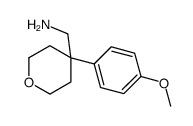| Description |
JW 55 is a potent and selective β-catenin signaling pathway inhibitor, which functions via inhibition of the PARP domain of tankyrase 1 and tankyrase 2 (TNKS1/2). JW 55 decreases auto-PARsylation of TNKS1/2 in vitro with IC50s of 1.9 μM and 830 nM respectively.
|
| Related Catalog |
|
| Target |
TNKS2:0.83 μM (IC50)
TNKS1:1.9 μM (IC50)
|
| In Vitro |
JW 55 (JW55) is a potent and selective inhibitor of the canonical Wnt pathway. Wnt3a-induced HEK293 cells containing a transiently transfected ST-Luc (SuperTop-luciferase) reporter show inhibition by JW55 with an IC50 value of 470 nM. JW55 is effective in the range of 1 to 5 μM in SW480 cells and 0.01 to 5 μM in HCT-15 cells. JW55 is effective in the range of 1 to 5 μM in SW480 cells and 0.01 to 5 μM in HCT-15 cells[1].
|
| In Vivo |
JW 55 (100 mg/kg, orally) reduces tumor development in conditional Apc knockout mice. JW55 reduces XWnt8-induced axis duplication inXenopus embryos and Tamoxifen-induced polyposis formation in conditional APC mutant mice[1].
|
| Cell Assay |
A total of 1,000 SW480 or RKO cells are seeded in 96-well plates. The day after, the cell culture medium is exchanged to solutions that contained 0.1% DMSO or 10 μM JW55 for RKO cells and 0.1% DMSO or 10, 5, or 1 μM JW55 for SW480 cells. All samples consist of a minimum of 6 replicates. The plate is incubated in an IncuCyte inside a cell culture incubator. Images are captured every second hour to monitor proliferation[1].
|
| Animal Admin |
Mice[1] Seven 12-week old female ApcCKO/CKO/Lgr5-CreERT2 mice are injected intraperitonally with 25 mg/kg of Tamoxifen diluted in an ethanol and corn oil (ratio 1:4). The mice are randomized into 2 groups and treated with either JW55 (100 mg/kg) or vehicle (DMSO). Daily per oral applications started the day after and continued for 3 weeks. The mouse body weight is measured twice a week. The mice are sacrificed and the intestines are dissected, washed in PBS, and fixed in formaldehyde [10% solution (v/v) in PBS]. The small intestines are stained using 1% methylene blue prepared in 10% paraformalaldehyde (PFA)/PBS solution. Small ileum Swiss-rolls are embedded in paraffin sectioned and stained with hematoxylin and eosin. Fixed colons are embedded in paraffin, sectioned and stained with an anti-β-catenin antibody. The number and size of the intestinal lesions are quantified by the Ellipse program.
|
| References |
[1]. Waaler J, et al. A novel tankyrase inhibitor decreases canonical Wnt signaling in colon carcinoma cells and reduces tumor growth in conditional APC mutant mice. Cancer Res. 2012 Jun 1;72(11):2822-32.
|

 CAS#:619-45-4
CAS#:619-45-4 CAS#:527-69-5
CAS#:527-69-5 CAS#:440087-51-4
CAS#:440087-51-4 CAS#:313375-40-5
CAS#:313375-40-5